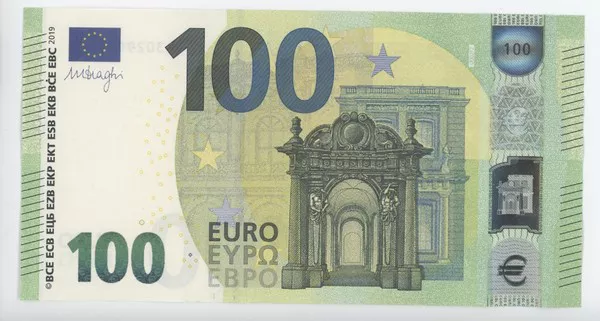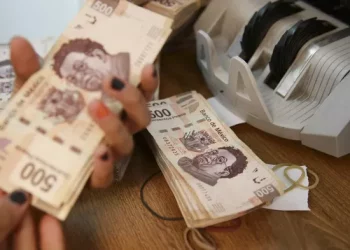The 50 Euro Cent coin is a small but significant denomination of the Euro currency. Introduced in 2002, it serves as a popular means of exchange in many European countries. In this article, we will explore the origins, importance, and design of the 50 Euro Cent coin, shedding light on its historical context and significance.
The Birth of the Euro Currency:
-
Symbol of European Unity
- The Creation of the Euro: In 1999, the Euro currency was introduced as an electronic currency. It became tangible with the issuance of banknotes and coins in 2002, with the aim of promoting economic integration and enhancing political stability among European Union (EU) member states.
- Euro Adoption: Over the years, 19 EU countries have adopted the Euro as their official currency, with the 50 Euro Cent playing a vital role in everyday transactions within these nations.
-
The Significance of the 50 Euro Cent Coin:
- Everyday Use: The 50 Euro Cent coin is widely used in day-to-day transactions, allowing individuals to make small purchases conveniently. Its popularity stems from its broad acceptance across EU member states, making it a valuable currency in the region.
- Economic Implications: The 50 Euro Cent coin plays a crucial role in maintaining price stability and facilitating trade within the Eurozone. Its value represents a vital fraction of the Euro, contributing to the overall stability and credibility of the currency.
Design and Features of the 50 Euro Cent Coin:
- Obverse Design: The obverse side of the 50 Euro Cent coin features a common design across all Eurozone countries. It depicts a map of Europe, highlighting the unity and shared values of the continent. The coin’s outer ring showcases the 12 stars of the European Union.
- Reverse Design: The reverse side of the 50 Euro Cent coin varies among different EU member states, as each country has the freedom to design their own coins. These designs often incorporate national symbols or landmarks, showcasing the diversity and cultural richness of Europe.
Notable Features and Security Measures:
- Size and Composition: The 50 Euro Cent coin has a diameter of 24.25 mm and weighs 7.8 grams. It is composed of a unique combination of metals, including copper, nickel, and zinc, which gives it a distinctive appearance.
- Security Measures: To prevent counterfeiting, the 50 Euro Cent coin is equipped with various security features such as microprinting, fine lettering, and raised edges. These measures ensure the coin’s authenticity and maintain public trust in the Euro currency.
Historical Significance and Collectibility:
- Historical Context: The 50 Euro Cent coin serves as a tangible symbol of European history and progress. It reflects the region’s journey towards economic integration and the shared identity of its diverse nations.
- Numismatic Value: Collectors worldwide value the 50 Euro Cent coin for its historical significance, unique design variations, and limited editions. It represents a fascinating piece of European heritage and offers collectors a glimpse into the continent’s rich cultural tapestry.
The Role of the 50 Euro Cent Coin in Promoting European Identity
-
Cultural Integration:
The 50 Euro Cent coin plays a role in promoting cultural integration among EU member states. The diverse reverse designs of the coin, representing different countries’ national symbols and landmarks, highlight the rich cultural heritage and diversity of Europe. This fosters a sense of shared identity and appreciation for each nation’s unique contributions to the continent’s history and culture.
-
Travel and Tourism:
The 50 Euro Cent coin is an essential currency for travelers within the Eurozone. Its widespread acceptance simplifies transactions and enables tourists to explore multiple countries without the hassle of exchanging currencies. This ease of use contributes to the growth of travel and tourism within Europe, promoting cross-cultural interactions and understanding.
-
Symbol of European Integration:
The 50 Euro Cent coin serves as a tangible symbol of European integration and the aspirations of a united continent. By having a common currency, the EU member states demonstrate their commitment to economic cooperation and political stability. The use of a standardized coinage system further strengthens the bonds between countries and reinforces the notion of a unified Europe.
The Economic Impact of the 50 Euro Cent Coin
-
Facilitating Small Transactions:
The 50 Euro Cent coin plays a vital role in facilitating small transactions in everyday life. Its denomination is well-suited for purchasing items such as public transportation tickets, newspapers, or small food items. By providing a convenient means of payment for these transactions, the coin contributes to the efficiency and smooth functioning of local economies.
-
Supporting Price Stability:
The 50 Euro Cent coin, along with other denominations, contributes to maintaining price stability within the Eurozone. It ensures that prices can be expressed accurately and efficiently, allowing businesses and consumers to make informed decisions. This stability is crucial for fostering consumer confidence, attracting investments, and promoting economic growth.
-
Cross-Border Trade:
The 50 Euro Cent coin facilitates cross-border trade among Eurozone countries. Its wide acceptance and uniformity across the region eliminate the need for frequent currency conversions and reduce transaction costs. This promotes seamless trade relations, strengthens economic ties, and encourages cross-border investments, leading to increased prosperity for participating countries.
Challenges and Future Outlook
-
Counterfeiting Concerns:
Like any widely circulated currency, the 50 Euro Cent coin faces the risk of counterfeiting. To address this issue, continuous advancements in security measures are essential. The European Central Bank and national mints collaborate to develop and implement robust anti-counterfeiting technologies, ensuring the integrity and trustworthiness of the Euro currency.
-
Potential Digitization:
As technology advances and digital payment systems gain popularity, there is a possibility of increased digitization of transactions. While this may reduce the demand for physical coins, the 50 Euro Cent coin is likely to retain its importance as a tangible representation of European unity and history. Its role may evolve, but its significance as a cultural symbol and collector’s item is expected to endure.
Conclusion:
The 50 Euro Cent coin is more than just a piece of currency; it is a testament to European unity, cultural diversity, and economic integration. Its widespread use, intricate designs, and contribution to economic stability make it an indispensable part of the Eurozone. As Europe continues to evolve and face new challenges, the 50 Euro Cent coin will remain a tangible symbol of the region’s shared history, values, and aspirations for a prosperous future.
Related Topics:


























